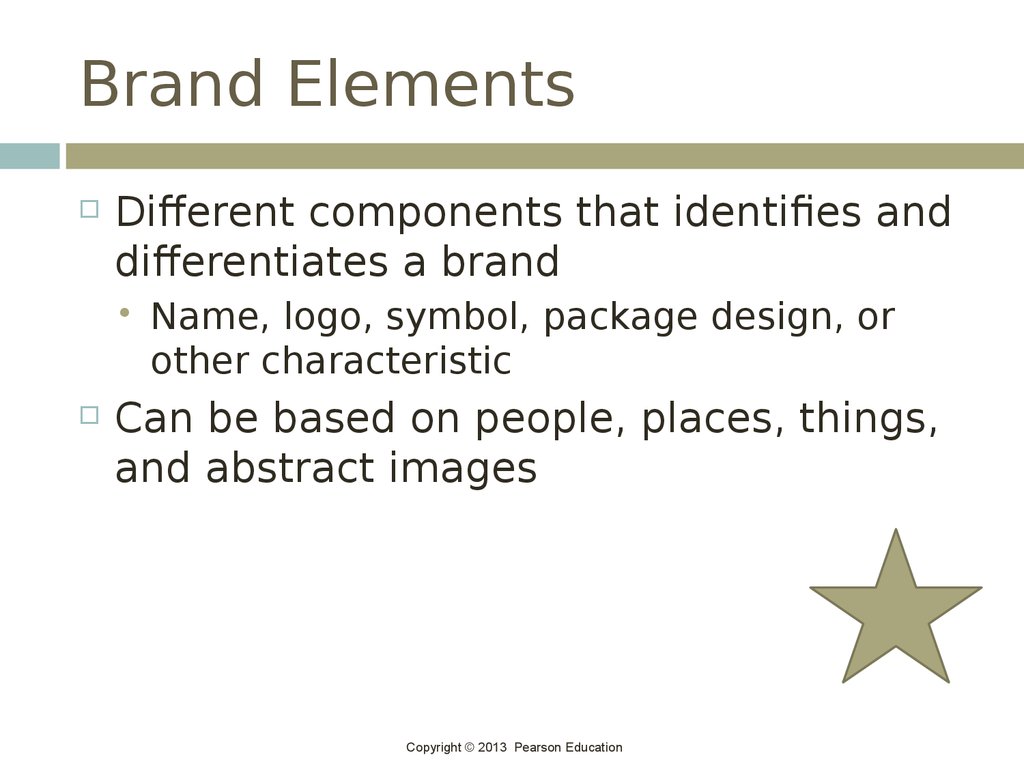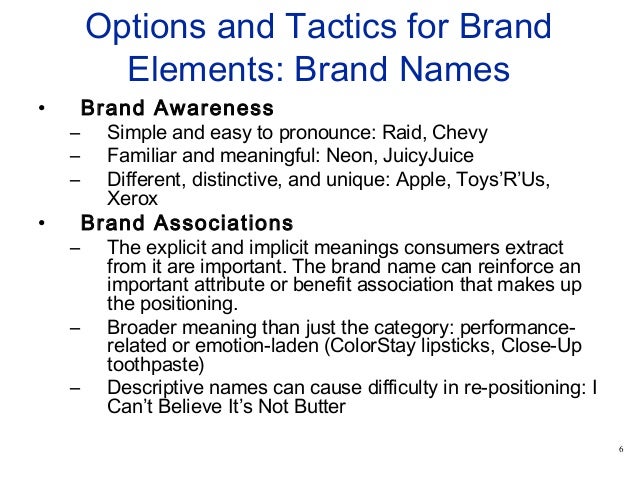
These inner thoughts connect personal inner relationship with the brand.

An external intangible facet reflecting the customer attitude towards the brand.An external intangible facet reflecting the customer as he or she wishes to be seen as a result of using a brand.An exterior facet with tangible and intangible areas, and defines the behaviour that indentifies the brand – the way the brand connect to its customers.An internal intangible facet to integrate the brand into the organization which is essential in differentiating brands.An internal intangible facet which forms the character, soul and brand personality which are relevant for brands.Physique is the starting point of branding and therefore it forms the brands backbone. An exterior tangible facet communicating physical specificities, colour, form and brand qualities.The six facets of the identity prism can be described as
#Brand element definition free
The six facets of the identity prism define the brand identity from different perspectives and sets the boundaries within it is free to change or to develop in time (Kapferer, 2007:107-112). Brand identity prism and three-tier pyramid (Kapferer, 2007:107 & 223). The 6 identity facets express the tangible and intangible characteristics of the brand and give it a unique authority and legitimacy of values and benefits (Kapferer, 2007:105-107).
#Brand element definition plus
Kapferer has developed a brand identity prism where he distinguishes a sender and recipient side, plus an externalisation and internalisation side.

From that perspective brand image is more a tactical asset, whereas brand identity fulfils a strategic asset role (Kotler & Pfoertsch, 2006:94). Brand image can easily change over time where brand identity represents long lasting values of the brand.

The brand must deliver coherent signs and products and it needs to be realistic (Kapferer, 2007:106). Hence the identity concept, the promise to a customer, plays a crucial role within the brand management process as a brand needs to be durable. For that reason brands need to be managed for consistency and vitality (Gelder, 2005:35). According to Van Gelder brand identity declares its background, its principles, its purpose and its ambitions.

It is necessary to have a clear and objective self-image of the brand identity in order to influence the desired set of brand awareness, perceived value and brand image. The brand perception, or in other words the brand image, is therefore always on the receiver’s side (Kapferer, 2007:99). To drive positive brand association that customers know and trust, requires recognizable brand associations in the mind of customers, without a discrepancy in the brand elements. The way a brand is perceived by its customers is key to it success. Brand identity should help establish a relationship between the brand and the customer by generating a value proposition involving functional, emotional, or self-expressive benefits.” (Aaker, 1996:68)īrand identity represents how the brand wants to be perceived, it leads brand image and is situated on the sender’s side. These associations represent what the brand stands for and imply a promise to customers from the organization members. Aaker defines brand identity as: “…a unique set of brand associations that the brand strategist aspires to create or maintain.
#Brand element definition drivers
For that the brand identity is one of the main drivers for brand equity. According to Aaker brand identity provides strategic direction, purpose and meaning for a brand.


 0 kommentar(er)
0 kommentar(er)
